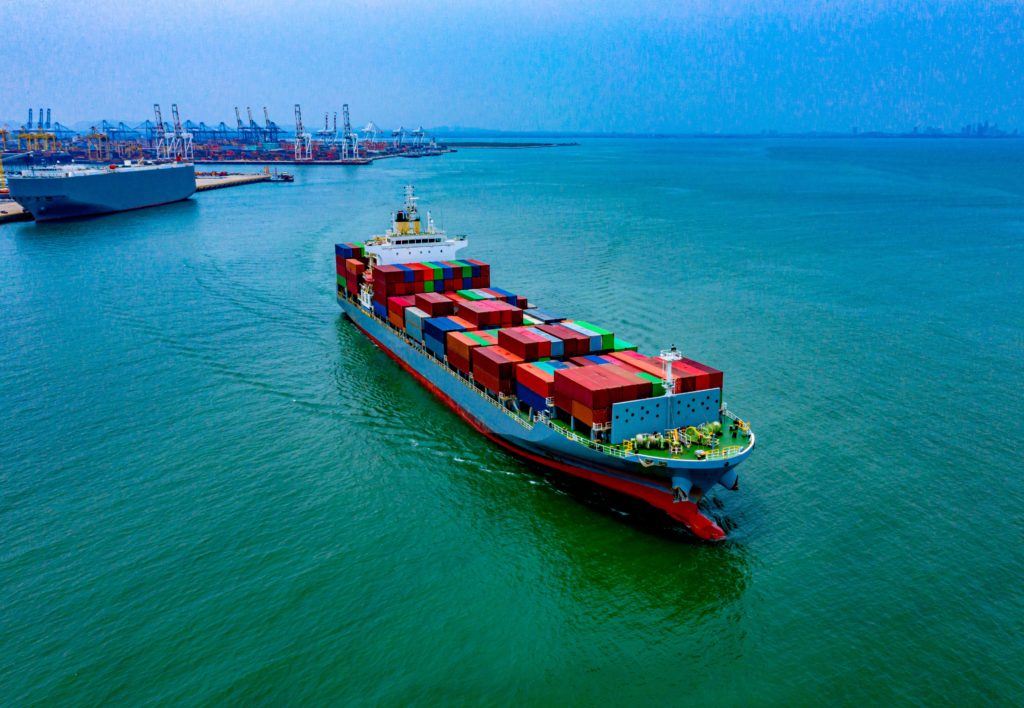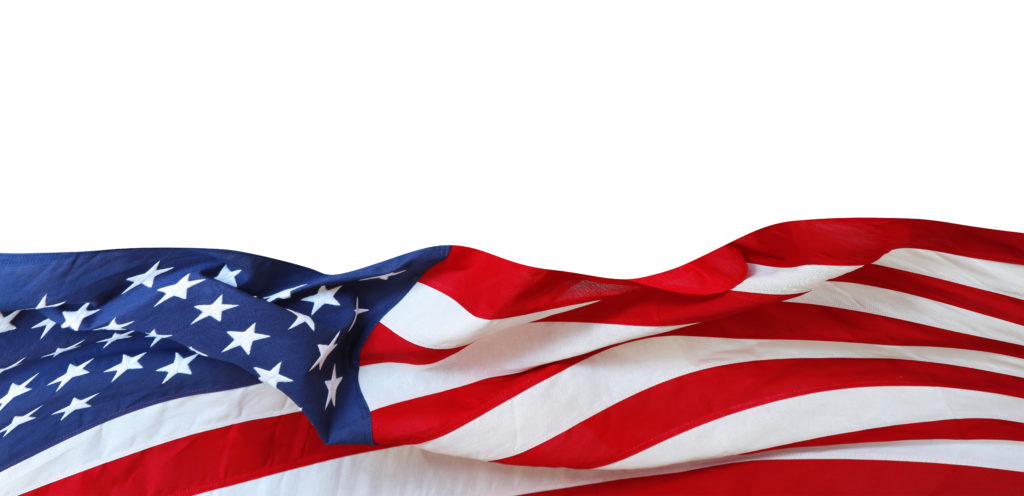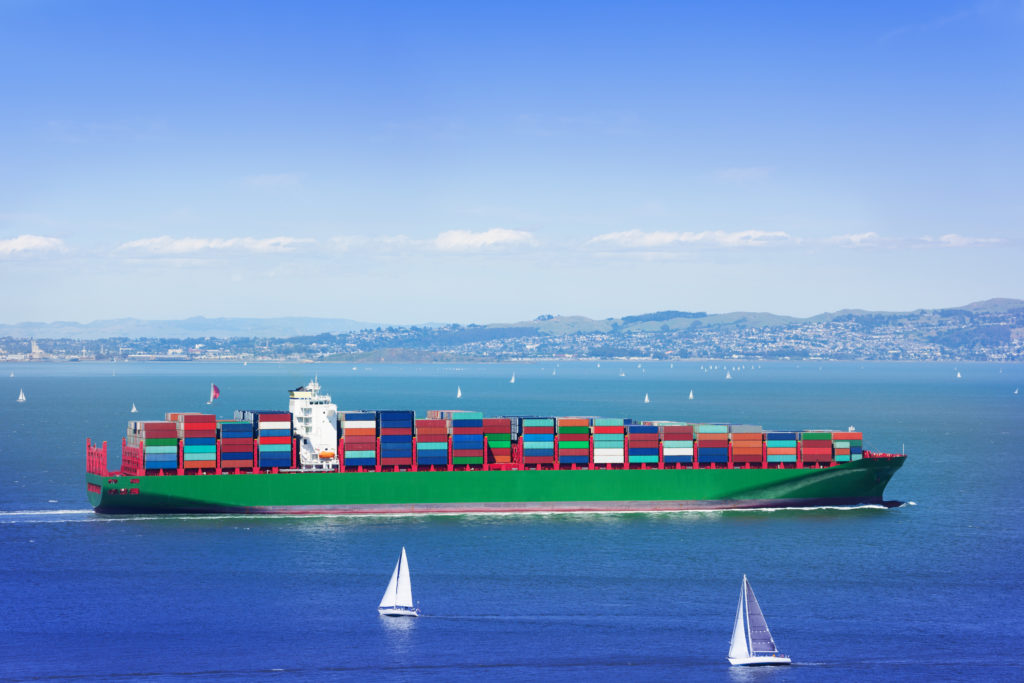Transportation in Bond
Transportation in Bond
What is In-Bond Process?
The in-bond process regulated by the U.S. Customs and Border Protection (CBP) allows imported merchandise to be entered at one U.S. port of entry without appraisement or payment of duties and transported by a bonded carrier to another U.S. port of entry or other authorized destination provided all statutory and regulatory conditions are met. At the destination port, the merchandise is entered or exported.
Types of In-Bond Movements
There are three primary types of in-bond movements:
- Immediate Transportation (IT; Type 61) entry allows foreign merchandise which has arrived at one U.S. port to be transported to another U.S. port where a subsequent entry must be filed;
- Transportation and Exportation (T&E; Type 62)) entry allows foreign merchandise arriving at one U.S. port to be transported through the U.S. and to be exported from another U.S. port without the payment of duty.
- Immediate Exportation (IE; Type 63) entry that allows foreign merchandise arriving at one U.S. port to be exported from the same U.S. port without the payment of duty;
In-Depth Coverage: Country of Origin
- Country of Origin of Imported Merchandise
- Customs Ruling: Country of Origin
- Country of Origin: Food Products
- Country of Origin: Chemical and Pharmaceutical Products
- Country of Origin & Country of Manufacture: CBP vs. FDA
- Country of Origin: Substantial Transformation or Country of Assembly Test
- Country of Origin and Free Trade Agreement
- Country of Origin and Section 301
In addition to the three primary in-bond movements, there are other scenarios using in-bonds as required by policy and regulation.
- Vessel Supplies for Immediate Exportation (VSIE) is the same entry as an IE in-bond movement except that the merchandise will be loaded on a vessel or aircraft for its use;
- Vessel Supplies for Transportation and Exportation (VSTE) is the same entry as a T&E in-bond movement except that the merchandise will be loaded on a vessel or aircraft for its use;
- Warehouse Withdrawal for Immediate Exportation (WDIE) is an entry that allows merchandise that has been withdrawn from a bonded warehouse at one U.S. port to be exported from the same U.S. port without the payment of duty;
- Warehouse Withdrawal for Transportation (WWT) is an entry that allows merchandise withdrawn from a bonded warehouse at one U.S. port to be transported to another U.S. port where entry must be filed;
- Warehouse Withdrawal for Transportation and Exportation (WWTE) is an entry that allows merchandise withdrawn from a bonded warehouse at one U.S. port to be transported through the U.S. to be exported from another U.S. port without the payment of duty;
- Warehouse Withdrawal of Vessel Supplies for Immediate Exportation (WDVSIE) is an entry that allows merchandise withdrawn from a bonded warehouse to be loaded on a vessel or aircraft, for its use, and exported from the same U.S. port;
- Warehouse Withdrawal of Vessel Supplies for Transportation and Exportation (WDSTE) is an entry that allows merchandise to be withdrawn from a bonded warehouse at one U.S. port, transported through the U.S., loaded on a vessel or aircraft for its use, and exported from another U.S. port.
In-Depth Coverage: Customs Valuation
What is the requirement for in-bond transportation?
In order to transport merchandise in-bond (transport imported merchandise, secured by a bond, from one port to another prior to the appraisement of the merchandise and without the payment of duties), an in-bond application is required.
An in-bond application consisting of a transportation entry and manifest must be transmitted to CBP via a CBP-approved EDI system in order to transport merchandise in-bond. Except for merchandise transported by pipeline and truck shipments transiting the United States, the paper 7512 (Transportation Entry and Manifest of Goods Subject To CBP Inspection and Permit) has been eliminated;
The methods available are the Automated Commercial Environment (ACE) or QP/ WP. QP/WP is an ABI hosted in-bond system that allows all parties, carriers and non-carriers, to submit electronic in-bond applications directly to CBP, as well as report their arrival and export. The ‘‘QP’’ half is the application function, the ‘‘WP’’ half is the arrival/export function. For in-bond merchandise transported by air, carriers can file the in-bond application also using ACE or QP/WP.
The cargo must be covered by a custodial bond (Activity Code 2 Bond) while being transported. The custodial bond guarantees compliance with regulations relating to the receipt, carriage, safekeeping and disposition of merchandise not yet officially entered into the U.S. commerce and for which duties are due. Once on file with CBP, the C2 bond is valid for all ports of entry.
In-Bond Application Check List
- Is carrier’s bond valid or active?
- Are all required data elements included?
- Is coded information valid?
- Is ACE bill of lading or air waybill on file in ACE?
- The in-bond only covers a portion of the manifested quantity. Remainder should be verified and entries filed simultaneously.
- Does manifested quantity match the CBPF 7512 or master bill of lading?
- Is the carrier listed on the CBPF 7512 also in ACE?
- Is the CBPF 7512 is complete?
In-Depth Coverage: Importing Medical Device
Who may file the transportation entry?
A transportation entry may be filed by:
(1) The carrier, or authorized agent of the carrier, that brings the merchandise to the origination port;
(2) The carrier, or authorized agent of the carrier, that is to accept the merchandise under its bond or a carnet for transportation to the port of destination or the port of exportation; or
(3) Any person or the authorized agent of any person, who has a sufficient interest in the merchandise as shown by the bill of lading or manifest, a certificate of the importing carrier (such as a power of attorney or letter of authorization), or by any other document.
CBP may request evidence to demonstrate sufficient interest.
What is the process for a diversion?
Merchandise may be diverted to any port other than the port of destination designated in ACE.
Approval of the request for a diversion is made strictly through ACE portal or ABI.
Carriers/brokers/filers are now required to electronically request and receive permission from CBP before diverting in-bond cargo from the original intended destination port to another port;
CBP’s disposition of the diversion request will be automated so that the carrier will receive authorization for, or denial of, the diversion immediately. When a diversion request is authorized, the user will receive a disposition code of a “3W” (Request for In-bond Diversion Granted). If the destination port code is rejected, there will be no corresponding rejection message. Cargo must be directed to the original destination port.
In-Depth Coverage: USDA-Regulated Products
- Importing USDA-Regulated Food Products
- Import Regulation by USDA Agricultural Marketing Service (AMS)
- Food Products – FDA or USDA Regulated
- Country of Origin Labeling
- Importing Animals, Animal Products, and Biologics into the US
- Importing Meat, Poultry, and Egg Products into the US
- Labeling and Marking of Imported Meat, Poultry, and Egg Products
- USDA National Organic Program (NOP)
- Agricultural Safeguards and USDA Licensing
What is the standard transit time for the in-bond transport?
A standard 30-day maximum transit time to transport in-bond cargo between U.S. ports is now in effect for all modes of transportation except pipeline and barge traffic. Barge in-bond movements are allowed for 60 days.
The in-transit time will not begin until the MOT arrival or CBP movement authorization, whichever is later.
When the merchandise is subject to examination or inspection by CBP or another government agency, the time for which the merchandise is held due to the examination or inspection will not be considered part of the in-transit time.
CBP may grant an extension of the in-transit time period on a case-by-case basis. Extensions of the transit time can be requested in the event of a delay at the port. The decision to extend the in-transit time period is within the discretion of CBP.
In-Depth Coverage: Trade Remedies
Carrier’s responsibility for reporting the arrival of the in-bond merchandise
Carriers will be required to report the arrival and location of the in-bond merchandise within 48 hours of arrival at the port of destination or port of exportation. The reporting of the arrival of the merchandise at the destination port completes the in-bond movement for purposes of meeting the in-transit time requirements.
Cancellation of in-bond documentation
An in-bond document can be canceled (i.e., the in-bond record will be closed within ACE) for the following reasons:
- The in-bond movement is canceled. Broker will file a consumption entry, warehouse entry, FTZ admission, the cargo will remain in the bonded warehouse, will be placed in General Order, etc.;
- Change of the in-bond type (e.g., IE to T&E);
- Change of the in-bond entry number;
- Change of Cartage Company or Common Carrier liable for movement of the cargo;
- Two brokers filed different in-bond entries for the same cargo.
FDA-Regulated Products and Import Requirements
- What is Food Safety Modernization Act (FSMA)?
- Prior Notice of Imported Foods
- Food Facility Registration
- Risk-Based Preventive Controls for Human Food
- Risk-Based Preventive Control for Animal Food
- Standards for the Growing, Harvesting, Packing, and Holding of Produce for Human Consumption
- What is Foreign Supplier Verification Program (FSVP)?
- Protect Food against Intentional Adulteration
- FDA Regulated Product in Foreign Trade Zone (FTZ)
- Entry Review Process for FDA Regulated Products
- Country of Origin VS Country of Manufacture
- Foods Regulated by FDA or USDA: What is the Difference?
- Label and Labeling Claims for Conventional Food and Dietary Supplements
- What is USDA Country of Origin Labeling (COOL)?
- Import for Export of FDA Regulated Products
- FDA Regulated Products in Personal Baggage or Sending by Mail or Courier
- International Mail Facility (IMF) and FDA Regulation
- Importing Biological Product Regulated by CBER
- Importing Cosmetics and Voluntary Cosmetic Registration Program (VCRP)
- Importing Drugs into the U.S.
- Importing OTC Drugs into the U.S.
- Importing Veterinary Drugs into the U.S.
- Importing Tobacco Products into the U.S.
- Importing Medical Devices into the U.S
- Importing Food Products into he U.S.
- Importing Radiation-Emitting Products into the U.S.
Customs Clearance and Import Requirements
- Entry of Imported Merchandise
- What is Section 321 Entry?
- What is Automated Commercial Environment (ACE)
- What is an Automated Broker Interface (ABI)?
- Who is Ultimate Consignee?
- What is Non-Resident Importer Program?
- Country of Origin of Imported Merchandise
- What is the Country of Assembly?
- What is the FDA's Country of Manufacture?
- Marking of Country of Origin on U.S. Imports
- What is Customs Bond?
- Reconciliation Prototype and Bond Rider
- Who Needs a Customs Broker?
- What is Customs Ruling Program?
- Classification of Imported Goods
- How is imported merchandise appraised?
- What are Import Quotas?
- What are Trade Remedy Duties?
- Antidumping Duty (AD) and Countervailing Duty (CVD)
- What is Foreign Trade Zone (FTZ)?
- What is Importer Security Filing (ISF)?
- What is Temporary Importation under Bond (TIB)
- What is In-Bond Process?
Quick Link To U.S. Customs & Import Requirements
Guidance on customs & logistics solution for traditional and e-commerce importers and exporters
Importer Security Filing (ISF)
An ISF is required when cargo (ocean only) laden on vessel at a foreign port is destined for shipment to the U.S. Under ISF rule, some importing information and details regarding cargo must be transmitted to the CBP at least 24 hours before goods are loaded onto the vessel, or at least 24 hours prior to the departure to the U.S.
Freight Forwarding
Looking for a freight forwarding partner? To move your cargo from its current location through customs to its final destination we will partner with you to find the best way for your business. Whatever your transportation, logistics and customs clearance need, we will do our best to customize a solution for your needs.
Customs Clearance
All goods imported into the U.S. are required to be declared to CBP. Our customs broker will help you stay in compliance with customs laws and regulations and clear your goods quickly and efficiently with our electronic Automated Commercial Environment (ACE) and Automated Broker Interface (ABI) Single Window System.
Warehousing & Distribution
Our warehouse facility offers great potential for serving as a regional hub with over 145,000 SF storage capacity close to Los Angeles Airport & Los Angeles/Long Beach Sea port. With our extensive experience in freight services, your import/export cargo will be handled quickly and effectively.
Section 321 Entry
Section 321 entry allows importing free of duty and tax for shipments imported by one person on one day having a fair retail value in the country of shipment not more than $800. We provide our resident and non-resident clients with dedicated ACE eManifest solutions for Section 321 entry of all modes of transportation.
Non-resident Importer Program
If you want to sell your products in U.S. marketplaces, but you are a business owner located outside of the U.S. and do not have an entity or presence in the U.S., you need to be established as a Foreign Importer of Record before your products can be imported into the U.S. We can help you.



















